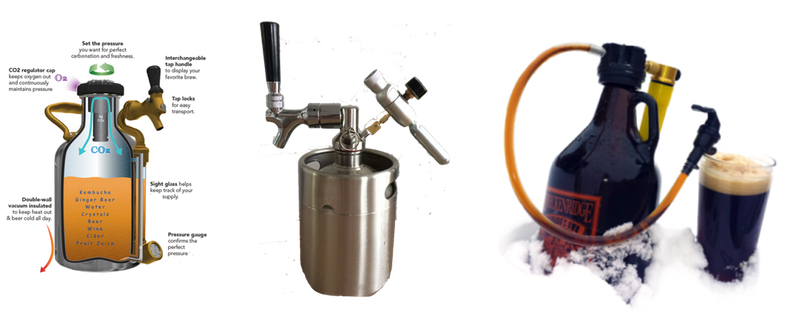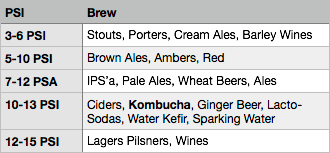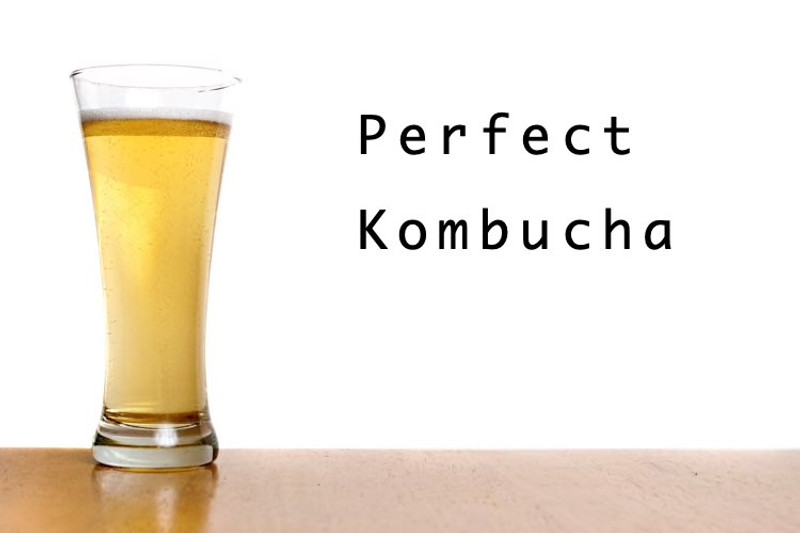
Now that you created just the most perfect brew. .. You want to maintain that freshness and the carbonation. Flat brew is really not my cup of tea. Most kegging systems costs a few hundred dollars or more. Well worth it for your man cave. BUT. In the kitchen? A mini keg you can even fit in the fridge. Or take with and have a real picnic. Talk about tailgate. Opportunity awaits …
Want low alcohol - but miss the carbonation?
We have 3 suggestions;
1) Do a Second Stage Ferment, or simply leave the bottled kombucha tea at room temperature. This changes the Kombucha tea from a aerobic ferment to a anaerobic (without oxygen) ferment. As the oxygen declines the gluconobacter decline and fail to convert the alcohol still being created by the active yeasts. Alcohol levels may go from the typical <0.5% to as high as 3-4% ABV. Really creating a kombucha Beer.
a) If your primary ferment is still sweet and has fermentable sugars, you don't have to add any additional sugars. Just shake the bottle (adding O2) and leave at room temperature (~74F) for a few days. Then refrigerate for another few days. Testing with a Hydrometer or Brix measures the sugar levels and lets you know how sweet or dry or ready your brew is.
b) Add fresh (preferably juiced) fresh fruit.
c) Add sugar. Different sugars and syrups will add their distinctive flavor as well as carbonation and alcohol.
1. Cooper Carbonation Drops adds a measured amount of pure sucrose for consistent results.
2. Muntons CarbTabs, adds dextrose and a heading powder that helps maintain the head (foam) and better mouth feel.
3. add Jelly Beans, or your favorite piece of hard candy. You'll get the taste and whatever chemicals they put in, so choose wisely (as always)
2) Add healthy beneficial minerals. Adding a 1/4 teaspoon of calcium carbonate, potassium or magnesium or even baking soda to a glass of kombucha. Any of these beneficial minerals will neutralize a small amount of the acids in the kombucha tea. The result is carbonation. (CO2 + H2O). This does affect the taste so be careful not to add to much and add just prior to drinking. Dr Robert Barefoot noted that taking coral calcium (calcium carbonate + minerals) and kombucha tea could result in resolving some 200 degenerative disorders.
3) Forced carbonation. This will allow you to keep the original kombucha draught taste and the alcohol as low as possible without adversely effecting the taste.Create a perfect glass of kombucha tea every time. If you desire more alcohol or less alcohol. Lots of carbonation and foam or just a little. You can also do your Second Ferment and/or add your beneficial minerals right in your mini keg. The choice is yours. We offer several systems that use readily available CO2 cartridges, from a few dollars to a hundred or so. You'll be surprised how great your brews will impress your friends and family.

Remember keeping your brew cold keeps the carbonation in the brew.
Force Carbonation Step-By-Step Instructions:
Note: If using your Keg for a Second Ferment of your Kombucha, Ginger Beer, Water Kefir or other home brew where yeast or other sediment from pieces of fruit, etc may be present, it is highly recommended to filter these out before proceeding to force carbonate or these pieces may clog the dispensing tube. We also suggest adding a filter to the interior outflow tube or typing a piece of screen mesh around the tube. Easiest to filter before pressurizing and to keep the brew cold, which stops the fermentation.
1. Fill the Keg with the beverage you want to carbonate. You want to leave 1-2 inches of head space below the cap.
2. Charge the cap with CO2. Some CO2 will go into the beverage, and the rest will be used to dispense it. Therefore the colder the liquid the more CO2 goes into the liquid. Shaking helps dissolve the CO2 into the liquid. Turning the keg upside down also helps. note In our Mini-Keg 64 we added a stainless steel tube to fill the CO2 from the bottom thereby going directly into the liquid rather than being compressed in the headspace.
3. Turn the pressure up to 15 psi. Setting to this high pressure drives CO2 into the beverage faster.
4. Put the Keg in your refrigerator for 2-3 days. Starting with ice cold liquid will shorten the time.
After 3 days, the beverage will be fully carbonated
6. Turn the dial down to about half-way (7-10 psi) See Chart Below

7. Pour, sip, repeat
8. You can adjust the dial to automatically maintain the perfect carbonation
Enjoy
Want to brew the lowest level of alcohol possible. Check our Library.
don't forget your choices available here. Force Carbonation Products

